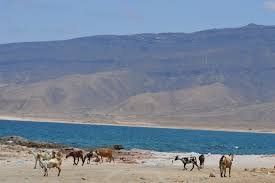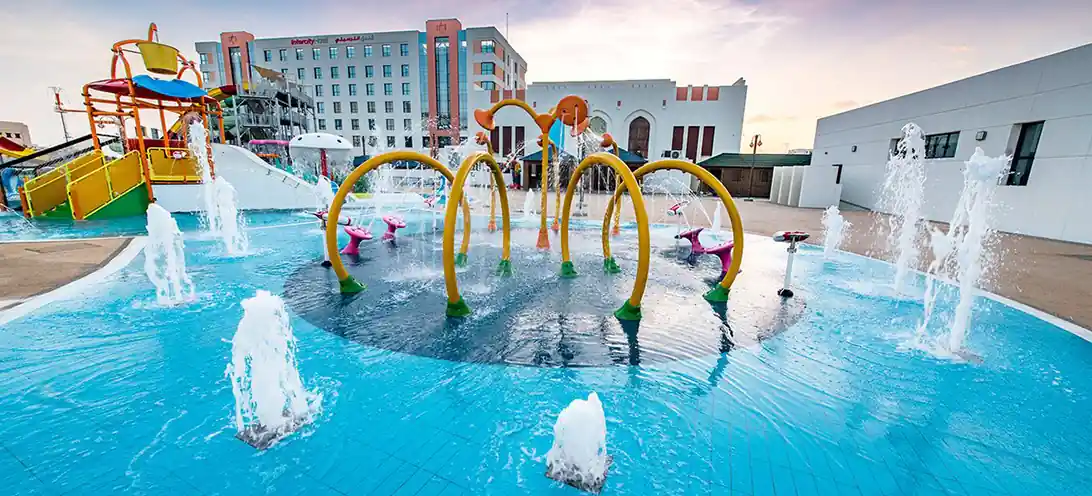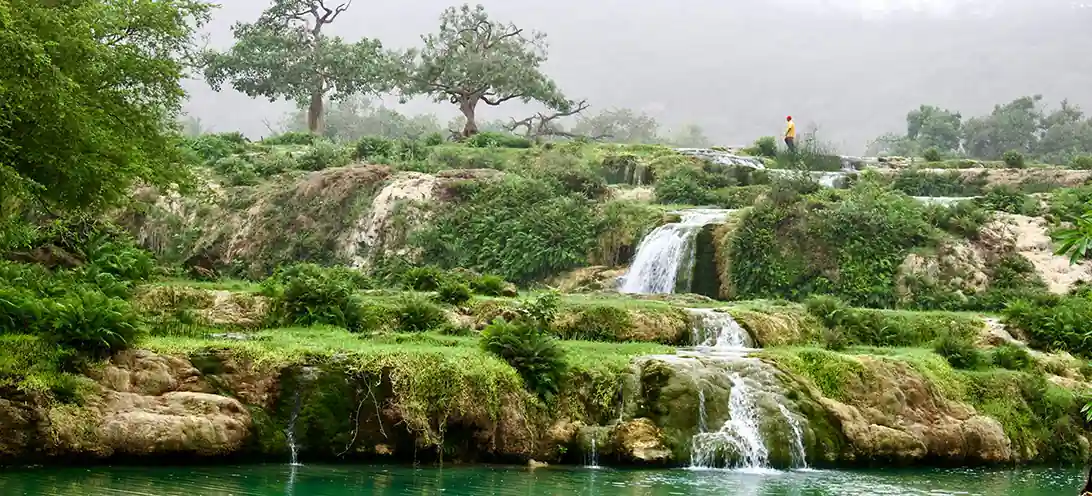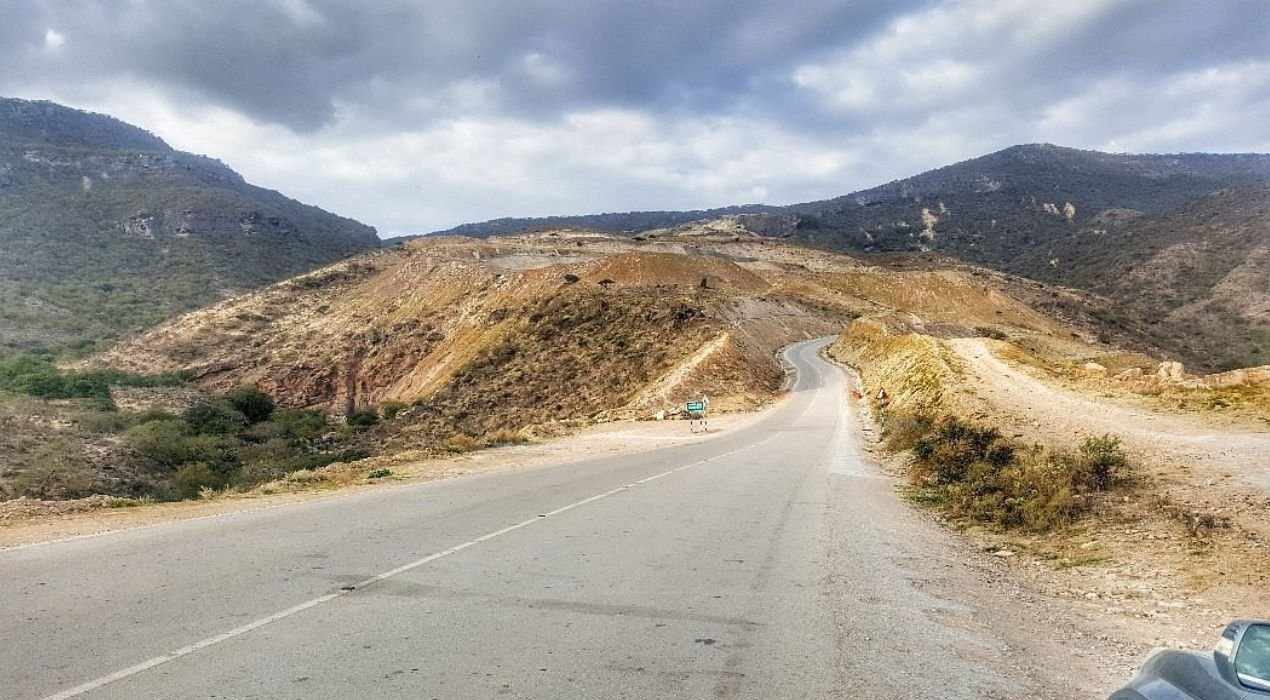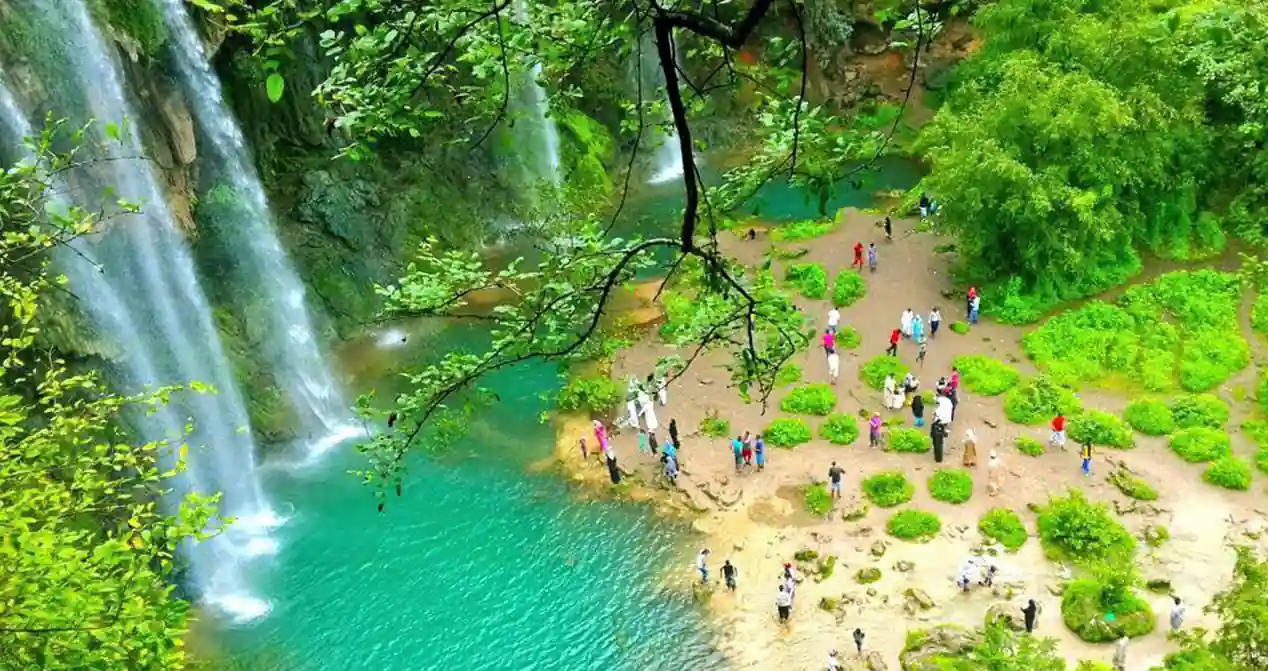Mirbat Salalah, a hidden gem nestled in the southern region of Oman, has become a captivating destination for travelers seeking authentic Arabian experiences. This coastal town, steeped in history and natural beauty, offers a unique blend of cultural heritage and breathtaking landscapes. Visitors to Mirbat Salalah Oman are treated to a journey through time, where ancient traditions meet stunning coastal vistas.
In 2024, Mirbat Salalah continues to enchant tourists with its diverse attractions. From the sacred Mohammed Bin Ali Mausoleum to the charming streets of the Old Town, the area has plenty to offer. Nature lovers will find themselves in awe of the rugged Jebel Samhan mountains and the picturesque coastline. This article explores the top attractions that make Mirbat Salalah a must-visit destination, showcasing its rich history, cultural significance, and natural wonders.
Mohammed Bin Ali Mausoleum: A Sacred Site
The Mohammed Bin Ali Mausoleum stands as a testament to the rich spiritual heritage of Mirbat Salalah, Oman. This sacred site holds immense significance for both locals and visitors, offering a glimpse into the region’s religious history and architectural beauty.
Historical background
Mohammed Bin Ali was a respected religious leader who lived in the 12th century. He passed away in 556H (1161 AD), leaving behind a legacy that continues to influence the spiritual landscape of Mirbat Salalah. As a descendant of Prophet Muhammad, Mohammed Bin Ali’s lineage can be traced back to Ali Bin Abu Talib and Fatimah Al-Zahra, adding to his revered status among the faithful.
During his lifetime, Mohammed Bin Ali gained recognition as an important leader and head of ruling families. His influence extended beyond religious matters, as he played a crucial role in shaping the social and political fabric of the region. The mausoleum serves as a reminder of his contributions and the enduring impact of his teachings.
Architectural features
The Mohammed Bin Ali Mausoleum is a striking example of Islamic architecture in Mirbat Salalah. Its most distinctive feature is the pair of twin onion domes that crown the structure. These domes, gleaming white against the backdrop of the Omani sky, create a powerful visual impact on visitors approaching the site.
The mausoleum’s exterior is characterized by its pristine whitewashed walls, which reflect the intense sunlight and create a sense of purity and sanctity. This architectural choice not only enhances the building’s esthetic appeal but also serves a practical purpose in the hot climate of Oman.
Inside the mausoleum, visitors will find a small but beautiful mosque that houses the grave of Mohammed Bin Ali. The interior space is designed to create an atmosphere of tranquility and reverence, allowing worshippers and visitors to pray and reflect in peace.
One of the most intriguing features of the mausoleum is the genealogical chart displayed on the wall inside the burial chamber. This chart meticulously traces the important family lines back to Mohammed Bin Ali, offering visitors a fascinating insight into the historical and familial connections that have shaped the region’s spiritual landscape.
Spiritual significance
The Mohammed Bin Ali Mausoleum holds immense spiritual significance for Muslims and is also respected by people of other faiths. Many believers visit the site to seek blessings and offer prayers, believing in the spiritual power associated with the resting place of this revered figure.
For Muslims, the mausoleum represents a tangible connection to their religious heritage. The fact that Mohammed Bin Ali was a descendant of Prophet Muhammad adds an extra layer of reverence to the site. Many visitors come to pay their respects and to feel a sense of closeness to their spiritual ancestors.
The mausoleum is not just a historical monument but a living spiritual center. It continues to attract pilgrims and seekers who believe in the intercessory powers of saints. Many visitors come with the hope of receiving blessings or having their prayers answered through the spiritual influence of Mohammed Bin Ali.
The site also serves as a place of education, where visitors can learn about Islamic history and the life of Mohammed Bin Ali. The genealogical chart and other historical information available at the mausoleum provide valuable insights into the religious and cultural heritage of Mirbat Salalah.
Surrounding the mausoleum is a vast cemetery, adding to the site’s solemn atmosphere. The numerous tombstones rising from the ground create a poignant reminder of the passage of time and the enduring nature of faith.
Visitors to the Mohammed Bin Ali Mausoleum are encouraged to approach the site with respect and reverence. Modest dress is expected, and visitors should remove their shoes before entering the mosque area. This sacred site not only offers a window into the spiritual history of Mirbat Salalah but also provides a peaceful retreat for contemplation and prayer in the heart of Oman.
Mirbat Old Town: A Journey Through Time
Mirbat Old Town, located approximately 70 kilometers east of Salalah, stands as a testament to the rich history and cultural heritage of Oman. This ancient port town, once a bustling hub for frankincense trade and horse breeding, now offers visitors a captivating glimpse into the past. The old town’s charm lies in its well-preserved architecture, historical buildings, and the opportunity for cultural immersion.
Traditional Omani architecture
The old town of Mirbat showcases a remarkable example of traditional Omani architecture. The settlement is characterized by a loosely conglomerated cluster of separate dwelling units arranged in a roughly north-south orientation. These ancient houses, constructed primarily by wealthy merchants engaged in overseas trade, served a dual purpose as both representative residences and functional storage spaces for traded goods.
One of the most striking features of Mirbat’s architecture is the ornate wooden windows that adorn the buildings. These windows, with their unique geometric shapes and intricate decorations, were often imported from India during the thriving trade between the subcontinent and Oman. The design of these windows allows for free circulation of wind, making them both beautiful and practical in the hot climate.
The houses in Mirbat Old Town were built in a harmonious style, with most structures standing close together and sharing similar layouts. Constructed using traditional materials such as mud and stones, these dwellings reflect the ingenuity of Omani builders in creating comfortable living spaces in a challenging environment.
Historical buildings and ruins
Mirbat boasts several historical buildings and ruins that offer insights into its storied past. One of the most prominent structures is the Mirbat Castle, also known as the Wali’s Castle. This 17th-century fortress, built to protect the town from Portuguese occupation, now serves as a museum showcasing the history of Mirbat and the surrounding region.
The old town is home to magnificent two-story trading houses that bear witness to the wealth of Mirbat’s golden age. Among these, the House of Sidov stands out as one of the most important archeological monuments. Its unique structure embodies the traditional Arab style, and its construction dates back approximately 200 years.
Visitors can explore the maze-like narrow streets of old Mirbat, where ancient buildings, some still inhabited and others in various states of decay, create a captivating atmosphere. The central square, once bustling with weekly markets, now stands as a silent reminder of the town’s former vitality.
Cultural immersion experiences
Mirbat Old Town offers visitors a unique opportunity for cultural immersion. As one walks through the winding alleys, it’s possible to encounter locals going about their daily lives. Children ride bicycles through the streets, while older residents sit in front of their homes, providing a glimpse into the town’s enduring community spirit.
For those interested in Omani cuisine, the local restaurants offer a chance to savor fresh seafood dishes. The Al Mina Mirbat restaurant, located inside the fish market, serves the catch of the day, providing an authentic taste of the region’s culinary traditions.
The old port of Mirbat, with its 300-year-old buildings, offers a window into the town’s maritime history. Visitors can observe local fishermen at work and gain an understanding of the importance of fishing to Mirbat’s economy and culture.
While much of the old town’s core has been abandoned as families moved to modern dwellings on the periphery, efforts are underway to preserve and develop this important heritage site. The goal is to sustainably preserve the vernacular quarters of Mirbat while encouraging continued habitation, ensuring that future generations can experience this unique slice of Omani history.
Mirbat Old Town, with its blend of architectural beauty, historical significance, and living culture, offers visitors a journey through time. It stands as a testament to Oman’s rich past and provides a fascinating destination for those seeking to explore the depths of Omani heritage in Mirbat Salalah.
Natural Wonders: Jebel Samhan and Coastline
Mirbat Salalah, Oman, boasts a stunning array of natural wonders that captivate visitors with their breathtaking beauty. Among these, Jebel Samhan and the picturesque coastline stand out as must-see attractions for nature enthusiasts and adventure seekers alike.
Scenic mountain views
Jebel Samhan, the highest peak in the Dhofar Governorate, offers visitors an awe-inspiring experience. Located approximately 50 kilometers from Salalah, this majestic mountain range provides unparalleled vistas that seem to touch the sky. As travelers ascend the mountain, they feel as if they’re rising above the clouds, with each turn revealing more spectacular scenery 1.
The journey to the summit of Jebel Samhan is a visual feast, showcasing the raw beauty of Oman’s landscape. On clear days, visitors are treated to panoramic views that stretch as far as the eye can see. The interplay of sunlight and clouds creates a mesmerizing spectacle, with the sky seemingly merging with the ocean on the horizon 1.
Jebel Samhan is not just a mountain; it’s also home to the Jabal Samhan Nature Reserve, which covers an impressive area of 4,500 square kilometers. This vast expanse makes it the largest wildlife sanctuary in Oman, providing a safe haven for a diverse range of flora and fauna .
Coastal landscapes
The coastal region of Mirbat Salalah, Oman, is a harmonious blend of pristine beaches and rugged shorelines. Situated between the extraordinary escarpment of Jebel Samhan and the Arabian Sea, Mirbat offers some of the most stunning coastal views in the region .
Visitors to Mirbat can explore its beautiful white sand beaches, which provide a perfect setting for relaxation and contemplation. The coastline is dotted with charming fishing ports, where traditional dhows bob gently in the azure waters, offering a glimpse into the area’s rich maritime heritage .
The road beyond Al Mughsail beach presents a thrilling coastal drive, with steep ascents and descents that offer breathtaking views of the sea. Travelers are advised to keep an eye out for camels that occasionally wander onto the road, adding an element of local charm to the journey 1.
Wildlife and bird watching
The natural wonders of Mirbat Salalah, Oman, extend beyond its scenic landscapes to include a rich diversity of wildlife. The Jabal Samhan Nature Reserve is a haven for various species, making it an ideal destination for wildlife enthusiasts and nature lovers .
One of the reserve’s most notable inhabitants is the rare and elusive Arabian leopard. This endangered species finds sanctuary in the rugged terrain of Jebel Samhan, making the reserve a crucial site for conservation efforts .
Bird watchers will find Mirbat Salalah a paradise, with numerous species frequenting the area. The diverse habitats, ranging from coastal areas to mountainous regions, attract a wide variety of birds. Visitors can spot various species of birds of prey, including the spotted eagle, booted eagle, and imperial eagle. Other notable avian residents include falcons, Arabian bustards, and rock pigeons .
The coastal areas of Mirbat also offer opportunities for marine wildlife observation. Lucky visitors might spot whales and dolphins swimming in the waters off the coast. The beaches serve as nesting grounds for green and loggerhead turtles, adding to the area’s ecological significance .
In conclusion, the natural wonders of Jebel Samhan and the coastline of Mirbat Salalah, Oman, offer a diverse and captivating experience for visitors. From the towering peaks of the mountains to the pristine beaches and rich wildlife, this region showcases the best of Oman’s natural beauty, making it a must-visit destination for those seeking to immerse themselves in the wonders of nature.
Conclusion: Mirbat’s Unique Charm and Appeal
Mirbat Salalah’s unique blend of history, culture, and natural beauty has a profound impact on visitors, offering a window into Oman’s rich heritage and stunning landscapes. From the sacred Mohammed Bin Ali Mausoleum to the charming streets of the Old Town, and from the majestic Jebel Samhan to the picturesque coastline, Mirbat provides a diverse range of experiences to explore. These attractions not only showcase the area’s historical significance but also highlight its enduring appeal as a destination for travelers seeking authentic Arabian experiences.
As Mirbat continues to draw visitors with its timeless charm, it stands as a testament to Oman’s commitment to preserve its cultural heritage while embracing sustainable tourism. The town’s ability to balance tradition with modern development ensures that future generations can continue to appreciate its unique character. With its mix of spiritual sites, architectural wonders, and natural beauty, Mirbat Salalah remains a hidden gem in Oman, ready to captivate those who venture to discover its many treasures.

